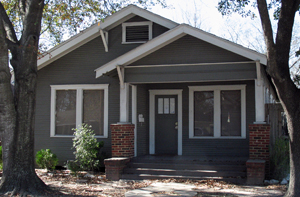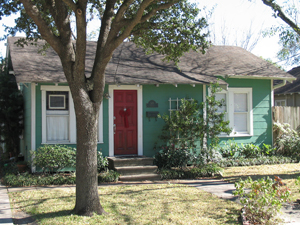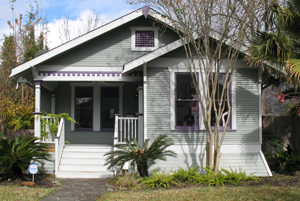



Freeland
History and Culture
Freeland was designated as an historic district in 2008. It was designated for several reasons. First, it is an excellent example of one of Houston’s early “streetcar suburbs”. It also is significant for its identification with developers Walter and Mary Freeland, Wilson Fraser, and Prentiss Granberry. Most importantly, Freeland Historic District is significant for its intact collection of Craftsman houses.
Streetcar Suburbs
Houston’s original public transportation system was a fleet of streetcars, drawn by mules. In the late 1800s, few automobiles were available. If people were to move to the suburbs, they needed a way to commute to jobs in the city. The developer Oscar M. Carter began developing Houston Heights in the 1890s. His company purchased some of the streetcar companies in Houston and converted them to electricity. Before the first house was even built in the Heights, streetcar lines made it possible to get there easily. Because Freeland was next to Houston Heights, its residents also could use those streetcar lines.
Developers
Freeland is named for Walter F. and Mary Freeland, who purchased the land for the Freeland Addition in 1920. Frasier Street is named for Wilson Fraser, who had a very brief financial interest in the property later in 1920. (The spelling of Fraser Street was changed at some point.) The land was sold by Prentiss Granberry, for whom Granberry Street is named.
Not much is known about Walter and Mary Freeland or Wilson Fraser. Prentiss Granberry, however, was a prominent resident of Houston Heights. His work in the building industry brought him to Texas as a young man. He worked for William Rice as a foreman in charge of the Houston Brick Works Company and Rice Ranch. Granberry was in business for himself by 1902, in rice irrigation and oil well drilling. He was involved in many land transactions in the Houston area.